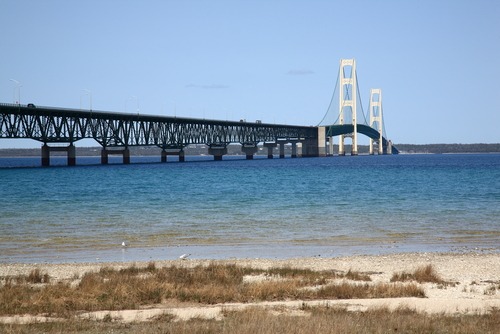
As Michigan Gov. Gretchen Whitmer’s deadline to shutdown the Enbridge Line 5 oil pipeline was reached on Wednesday and defied by the company, the Consumer Energy Alliance (CEA) this week released a report outlining the massive economic impact a closure would have on Pennsylvania and other affected regions.
Enbridge, a multinational energy transportation company headquartered in Calgary, Alberta, entered the Line 5 pipeline into service in 1953. A 645-mile petroleum dual pipeline system, it runs under the Straits of Mackinac from Superior, Wis., to Sarnia, Ontario, by way of Michigan. CEA and other industry leaders have repeatedly supported the pipeline as critical to the regional energy infrastructure.
“Line 5 delivers energy that affordably fuels the lives and livelihoods of countless consumers, farmers and businesses across Michigan, Ohio, Indiana and Pennsylvania,” CEA Midwest Executive Director Chris Ventura said on May 10. “After enduring decades of economic and job-creation challenges, CEA is concerned that the reckless and arbitrary action by Governor Whitmer to shut down Line 5 could halt the region’s positive progress and further erode our economic competitiveness.”
The CEA report, prepared by Weinstein, Clower & Associates, estimated that the overall loss of economic activity in the four most heavily impacted states would be around $20.8 billion, with an $8.3 billion reduction in combined Gross State Product. The report also anticipates that there will be a total of 33,755 lost jobs and $2.36 lost in labor earnings in salaries, wages, and benefits. The states could also face $265.7 million in lower annual state tax revenues.
Though CEA estimates that Ohio will bear the majority of the economic brunt, anticipating a $13.7 billion loss in economic activity, the report showed that Pennsylvania could potentially lose up to $2.1 billion in economic activity, $733 million in Gross State Product, and $34 million in state tax revenue. Additionally, Pennsylvania could lose 3,853 jobs and more than $331 million in labor income.
“The modeled losses likely understate the real-world impact because the study does not examine several other avenues of knock-on economic effects which will add to the total economic damage,” CEA said in a release. “These include expected upward pressure on fuel prices for consumers for gasoline and home heating; commercial trucking and aviation users; and farmers whose fertilizers rely on the feedstock carried by Line 5. Higher fuel prices across the board translate to more expensive costs to consumers.”
On Nov. 13, 2020, Whitmer and state Department of Natural Resources Director Dan Eichinger notified Enbridge that its 1953 easement allowing it to operate the dual pipelines under the Straits of Mackinac had been terminated. The state decision to revoke the easement was based on violation of the public trust doctrine, given the “unreasonable risk that continued operation of the dual pipelines poses to the Great Lakes,” Whitmer’s release stated.
Whitmer told Enbridge the company would be required to cease operations of Line 5 by Wednesday.
On May 11, Enbridge announced it would defy Whitmer’s shutdown orders and would only cease operations if ordered by a court or company regulator. The following day, Whitmer and Eichinger wrote to Enbridge Executive Vice President Vern Yu that if the company continues operating the pipeline, she will consider all resulting profits to be property of the state of Michigan and that it will be trespassing on state property.
On May 12, Enbridge said the Chambers of Commerce from the U.S., Canada, Michigan and Ohio, along with the Wisconsin Manufacturers & Commerce, Attorneys General of Ohio and Louisiana, the Canadian government, and union workers, all filed friend of the court briefs regarding Enbridge’s case in federal court over the Line 5 easement.
The brief filed on behalf of the Attorneys General of Ohio and Louisiana, said, “A cessation of Line 5 will reduce the gas, diesel, and jet fuel supply in Michigan, Ohio, Pennsylvania, Ontario, and Quebec by 14.7 million gallons per day.”